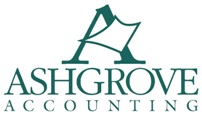Successful small business based on disciplined spending
There seems to be a very strong correlation between small businesses that are struggling to make ends meet, and are also spending too much money on meal & entertainment expense. In my casual observance, when I examine accounting records, I begin to notice declining sales, margins, and profit when meal and entertainment expense is greater than 0.5 – 1%. Excessive spending in this area, such as 3-5% of sales is typical for companies in deep trouble.
It’s not that spending on coffee or lunch in and of itself is draining away needed cash flow. Rather, I think it’s more a problem of not having enough discipline to carefully monitor and curb outgoing cash flow. This unusually falls under the guise of “business luncheon”, “networking”, and “prospecting”. Good bookkeeping records with software such as QuickBooks or Peachtree will help measure this expense, but you’ve also got to be prepared to change habits if you want to improve. I find changing habits to be the most difficult task.
There is no correlation to the industry or kind of business. I see the problem with professional service firms as much as I do with contractors and retail businesses. How does your business compare? Is my theory right or wrong?
Posted in: Blog
Leave a Comment (0) →
